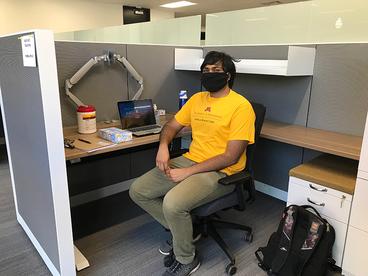The Health Sciences Education Center (HSEC) is playing host to a number of contact tracers from the School of Public Health (SPH) and Medical School for the next several weeks.
The University of Minnesota has played an important and significant role in the state's response to the COVID-19 pandemic, so it did not come as much of a surprise when the Minnesota Department of Health (MDH) recently asked the University's Medical Reserve Corps (MRC) for their help in contact tracing the spread of the disease. Contact tracing is the process used when trying to determine who may have come into contact with an infected person and following up to see if those contacted may have become infected themselves.
MRC coordinator Kathy Berlin, RN, PHN, reached out to both SPH and the Medical School for their help and in turn, almost 60 student volunteers are now serving the role as contact tracers (this number will soon increase to 100).
Because of the nature of the work, not everyone has the best remote environment to work from, so the MRC worked with Peg Brown and Brenda Trebesch in the health sciences facilities and capital planning office to secure space for those who needed a dedicated space for this important work. HSEC fit the order perfectly as it had brand new office space that had not yet been occupied.
According to Berlin, the reviews of the space have been overwhelmingly positive and is currently being used by around ten percent of the content tracers. The plan is to continue to have this space available to the contact tracers through June and possibly into July. Berlin appreciates the creativity and flexibility of everyone involved in making this happen.
